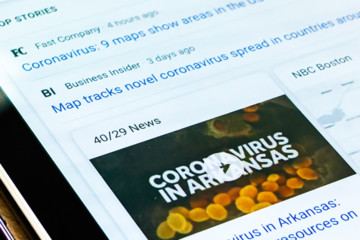Misinformation: what is it, how do you spot it, and how can you help stop it?

Misinformation is not a new problem. It is, however, an issue that has grown in prominence recently as we’ve seen and heard so much more about it during the COVID-19 pandemic. Governments and health authorities are doing their best to communicate potentially life-saving health messages on digital and social media but they’re competing against a growing number of information sources and an increasing amount of misinformation that spreads faster than the truth.
Tackling misinformation is challenging. In fact, it’s highly unlikely that we’ll ever be able to stop it altogether. That doesn’t mean we can’t play a part in stopping its spread and minimising its impact.
What is misinformation?
Misinformation is misleading or incorrect information that is shared without any negative intent. Like when rumours about who celebrities might be dating are shared online. A friend might tag you in a post about it because you’re interested in the celebrity, but they didn’t know the information was false at the time and had no intention of misleading you.
Disinformation, on the other hand, is false information that is spread with the intent of being confusing, misleading or pushing an agenda. Sometimes this can be part of coordinated campaigns across multiple social media channels, even involving bots. Disinformation can turn into misinformation when people innocently share the content not knowing it is false.
How do you know you’re reading misinformation?
If you come across information online that you think could be misinformation, there are a few questions you can ask yourself before sharing it.
- What is the source of the content? Is it from an official source such as a government website or a known organisation/publisher?
- When was the content published? If it’s not recent, there could be more up to date information available.
- Is the content meant to be a joke? Not all satirical content comes nicely packaged from dedicated websites. Be sure to check what you’re reading isn’t satire. If it is and you’d like to share it, make sure the people you share it with know it’s satire too.
- What is the motivation for the content being shared in the first place? Is it to inform, entertain or provide an opinion? You should be able to see what the authors intent was in sharing the content.
How can you help stop the spread of misinformation?
If you can’t answer any of the above questions with confidence, it’s safer not to share.
Before you share anything, take a moment to stop and reflect on your reasons for sharing the content. Studies show if people stop to think about what they’re sharing before they share it, they are less likely to spread misinformation.
Social media platforms have also made some changes to help limit the spread of misinformation, such as Twitter’s ‘read before you retweet’ that shows up when a user goes to retweet an article that they haven’t clicked on.
Misinformation can be harmless, but at a time when communicating fact-driven messages is crucial for protecting lives, the spread of misinformation can threaten our health and our communities.
If you can’t verify it, don’t share it.